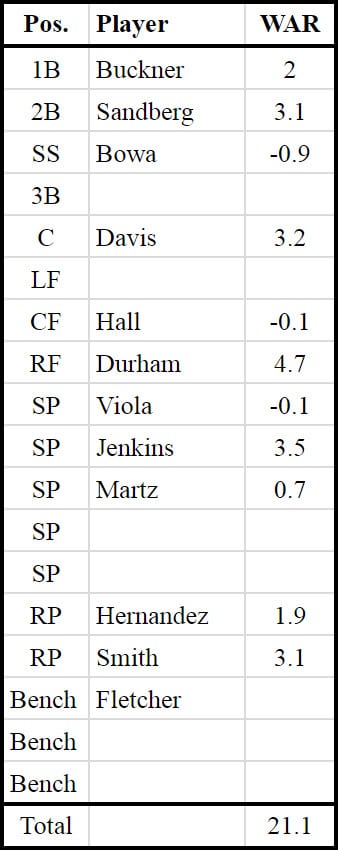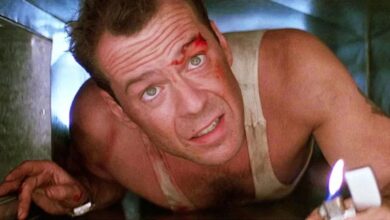
Financial State of the Central: Brewers Content to Rake in Profits (Special Bonus: Daydream Cubs, Pt. 2)
The first in five-part look at the financial state of each NL Central team
The Brewers had a good offseason, but they could have had a great one. Their failure to outbid Philadelphia for Jake Arrieta shows that Milwaukee’s front office still values profits over winning.
Last season the Brewers unexpectedly emerged from their rebuild a year early. They exceeded all preseason predictions and shot out to first place in the NL central, a position they would not relinquish until after the All-Star break, and came within a single game of making the Wild Card.
To their credit, the Brewers made some bold offseason moves to improve. They signed Jhoulys Chacin, who could be a breakout star, to a reasonable two-year deal. Next, they traded four prospects to Miami for star outfielder Christian Yelich. Finally, the Brewers signed Lorenzo Cain to a five year, $80 million deal. I may quibble with the Cain signing, given the logjam it creates in the outfield, but moving Ryan Braun to first base is probably a good long-term move to keep him healthy.
At the conclusion of these transactions in late January, the Brewers had a solid ballclub with an $84 million payroll. Yet I, like many observers, expected at least one more move because the Brewers still had money to spend. As recently as 2014, they carried a $126 million payroll while still turning an $11 million profit. The Brewers also made a record $67 million in pre-tax profit in 2017 with an $85 million roster. So there was $40 million in reserve to work with.
The logical move was a starting pitcher. The Brewers’ rotation was penciled in as Jimmy Nelson, Chase Anderson, Zach Davies, Jhoulys Chacin, and Brent Suter, with Wade Miley on a minor league deal available as well. But Nelson underwent surgery in September and is not expected back until June (Junior Guerra has been filling in quite well) and both Anderson and Davies had career years in 2017 and could regress. Finally, Suter only pitched 82 innings in 2017 (and has already been demoted to the bullpen this year).
In other words, there was room for improvement. Meanwhile, four high-quality starting pitchers were still on the market: Yu Darvish, Jake Arrieta, Alex Cobb, and Lance Lynn. The fit was there.
The Brewers could be forgiven for not overspending on a useful, but not desperately needed player had all four of those pitchers signed monster deals. But that did not happen. Arrieta and Lynn both signed fairly short-term deals. Arrieta’s three-year, $75 million deal would have worked particularly well for the Brewers. The one-year opt out is perfect for a club looking to replace Nelson for half a season while still staying competitive.
The Brewers could also afford the $30 million in 2018 and could guarantee all five years if they liked what they saw. And that timeframe perfectly overlaps their current window of contention.
Instead, the Brewers made half-hearted attempts to sign Arrieta and Cobb to one-year deals (the tentative offer to Cobb was allegedly $12 million). While I respect the attempt to land a bargain deal, the Brewers had the means and the need to make a more substantial, yet still under-market, offer. The Brewers’ unwillingness to match or outbid Philadelphia for Arrieta can only be explained by a front office content to coast to further record profits.
As a Cubs fan, I’m fine with that. As a baseball fan, however, I’m disappointed.
———————————————————————————————————————————————-
Bonus Feature – Daydream Cubs: 1982
We now rejoin the Daydream Cubs in a parallel universe where Moshe was transported back as GM of the 1981 Cubs to create an alternate future for the franchise. Click that link for a summary of the rules and all drafts & rosters to date.
Meet the 1982 Daydream Cubs. Blank spots can be filled with any cheap free agent veteran or AAA farmhand.
The 1982 Daydream Cubs are largely identical to their real-world counterpart. The only significant roster change is Frank Viola, who I drafted in 1981 and debuted in 1982. I also choose to play Ryne Sandberg at second, rather than third, to facilitate his position change a year early.
The 1982 season goes much as the real campaign did. With less than 22 team WAR, the Daydream Cubs are not good. The 1982 draft, however, is historically good. The Cubs own the No. 1 overall selection, but it will not be Shawon Dunston.
1982 Draft: (#) = Player’s actual selection round; AS= All-Star; HoF = Hall of Famer; GG = Gold Glove.
- Round 1: Dwight Gooden (1) – SP: All-Star (x4), Cy-Young (x1)
- Round 2: Barry Bonds (2) – LF: MVP (x7)
- Round 3: Terry Pendleton (7) – 3B: AS (x1), MVP (x1), & GG (x3)
- Round 4: Jose Canseco (15) – OF: AS (x6), MVP (x1)
- Round 5: Brett Saberhagen (19) – SP: AS (x3), Cy-Young (x2)
- Round 6: Kenny Rogers (39) – SP: AS (x4), GG (x4)
In real life, Barry Bonds did not sign in 1982. But we know for a fact that Bonds would have signed for $75,000 rather than the $70,000 the Giants offered. The Daydream Cubs will happily offer $100,000 just to generate goodwill. This draft sets up the Daydream Cubs long-term at three positions. Pendleton in particular is a hidden gem, because finding quality infielders outside of the first round of the draft is tough, even with hindsight.


